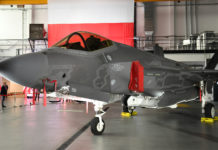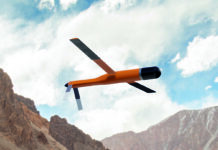The integration of communications and information is driving a worldwide transition that is being termed the Fourth Industrial Revolution. Armed forces and security organisations around the globe are embracing this transformation, by fielding digital communications networks and interconnected systems of systems, empowered by information services.
The capabilities they deliver empower military forces, enabling smaller forces to deliver big, decisive actions. This article examines some of the elements of such networks and the systems and services they enable.
A prominent step in this direction is the modernisation of communications systems from analogue, voice-based radio and telephone systems to digital systems, utilising Voice-Over-IP (VOIP) internet protocols. This move began in the 1970s, with the introduction of IP technology that provided the basis for the internet in the 1990s and revolutionised the global commercial telecommunication in the 2000s. The commercial world was quick to adapt the new technology, given the huge commercial values it delivered. At the same time, the military was slow to convert because of the huge investments in acquisition and deployment of military specific systems, rapid obsolescence of such systems, and complexities addressing standardisation, interoperability, field operation and information security.
Software-Defined Radios
The introduction of Software-Defined Radios (SDRs) in the early 2000s changed the radio communications paradigm by producing radio transceiver hardware and supports standard-based software. It enabled users to leverage equipment for years, by updating and upgrading the ‘operating system’, rather than replacing major electronic subsystems in a complex and expensive upgrade. This software upgrade method is similar to the operating system update on mobile phones and PCs. Moreover, with radios covering larger bandwidths than their predecessors, users can rely on common waveforms, rather than identical equipment to ensure interoperability and information sharing, an essential capability for operations within joint forces and between coalition partners. Frequent over-the-net upgrades enable users to respond to evolving challenges and address new threats by updating equipment with new algorithms and software patches on the fly.
With waveforms becoming common among military users, more agile forms of communications are introduced, supporting highly robust, secure information transfer methods designed to be resilient in complex environment and more immune to interference and jamming.
The SDR Revolution
SDRs have grown to become a significant change agent for defence systems and military organisations. Primarily, those radios provide a robust and reliable alternative to traditional two-way communications, by enabling better, more dependable communications with narrower VOIP channels, thus improving spectrum utilisation. Additionally, with baseline communications going digital, a single radio set could support multiple voice and data channels, secured and encrypted, offering more efficient use of available assets. By implementing advanced waveforms, standard radios can now act as repeaters, point-to-point links or as members of Mobile Ad-Hoc Networks (MANET), establishing seamless, flexible, self-formed, self-healing networking in areas where other means of communications do not perform reliably. A major advantage of these new radios is maintaining compatibility and interoperability with hundreds of thousands of combat-net-radios sold worldwide.
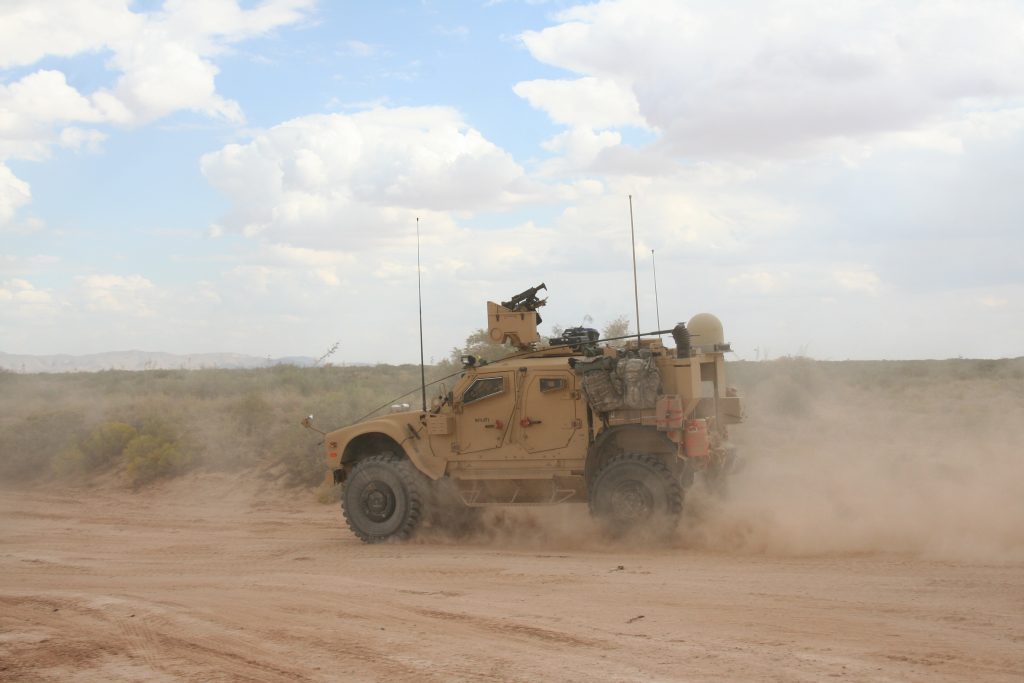
Traditional equipment offered military personnel the ability to tune into a single preferred frequency and supported only one protocol. With SDR, users can monitor and communicate over a large portion of the spectrum (typically HF-VHF-UHF-L Band) while supporting multiple protocols. Operating in various protocols enables military SDR sets to link different domains such as land forces, pilots or naval units, through terrestrial, airborne and satellite-based networking. They harness all available connectivity means, including Bluetooth, CDMA, GSM, LTE or WiFi, along with specific services unique to the military service of coalition. Specific gear and waveforms are also employed, for example, to establish low-latency connectivity necessary for real-time applications such as targeting and remote control.
SDR has come a long way since the early days when computing technology limited the amount of processing, and therefore the capabilities of SDR. Modern radios are highly secured network-controlled devices that can be programmed and updated on the fly. Although they employ common hardware and software modules, different systems are offered to address specific user needs, as part of a “family of radios” each offers unique advantages.
A typical SDR supporting multiple voice sessions and data transmissions, as well as backward compatibility to legacy waveforms is Elbit Systems’ E-LYNX, a radio family that provides the essential element for cross-network integration. Operating simultaneously on a single physical channel, E-LYNX enables users to communicate in several voice networks at the same time, and independently transfer data, reducing the number of single channel radios on board, along with the associated antennae, cables and power consumption. It also eliminates co-location interference generated by multiple radios on board and simplifies spectrum allocation management.
Like other tactical SDRs, the E-LYNX wireless solution provides frequency coverage from 30 MHz to 1.8 GHz with multiple waveforms. It is available in high-power dual- or single-channel vehicular/airborne and manpack sets and down to handheld and personal role soldier configurations. A major advantage is its extended networking coverage, particularly over harsh terrain, using multi-hop concurrent flooding technique that improves spectral usability and efficiency and immunity to interference. New configurations released last year include lighter, compact, low-power-consumption manpacks and a new configuration of vehicular sets that easily integrates into modern combat vehicles.
Having a digital two-channel radio is a major advantage to dismounted unit leaders who, until now, relied on three radios to perform their job. The new radio set can support two channels simultaneously, with secure voice and simultaneous data transfer. Full motion video comes as an extra bonus that previously required dedicated communications gear. A two-channel radio means troops can carry fewer radios and spare batteries, thus reducing their loads.
Satellite Based Networks
While terrestrial networks are effective supporting land operations, their coverage is limited by terrain, jamming and interference that requires careful planning to minimise crossband interference. To maintain such communications, military forces have established dedicated networks designed for expeditionary and deployed operations. Such networks are adapted to support the specific military doctrine and represent a significant capability and investment that cannot be replaced as frequently as commercial communications technology.
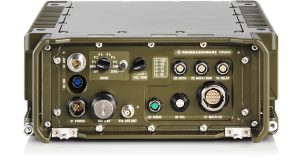
Satellite-based communications networks are available to support global connectivity as well as link units across mountainous area or in urban terrain that hampers land-bound communications even at close range. However, unlike standard radios, satellite terminals require highly trained specialist operators and technicians that are rarely available with tactical units. For this purpose, the US Army invested in the Warfighter Information Network – Tactical (WIN-T) Program of Record developed and produced by General Dynamics Mission Systems. WIN-T provides reliable, secure, and seamless communications for units operating at theatre level and below.
The satellite-based WIN-T network enables military users to integrate an ‘everything-over-internet’ protocol to provide connectivity across an extended, non-linear battlefield and at remote locations. The network was designed to deploy over a period of 30 years in four increments. The first increment was fielded in 2002 and established rapidly deployable means to exchange voice, video, data, and imagery between command posts using compact, mobile Ku-band and Ka-band satellite-based network terminals mounted on vehicles. As the terminals were limited to stationary positions, this increment was referred to as ‘Networking at-the-Halt’.
The second increment was introduced in 2012, providing mobile communications capabilities at the division level and below, providing manoeuvre commanders with initial ‘command and control on-the-move’. Increment 2 uses vehicle-mounted directional SATCOM terminals that can operate when vehicles are moving. Supporting units from battalion to company level, WIN-T Increment 2 improved command and control and secure communications within manoeuvre brigades. The command vehicles carrying those satellite terminals include M-ATV, STRYKER and HMMWVs acting as a ‘Point of Presence’ (PoP) employing radios with terrestrial Highband Networking Waveform and a satellite Network Centric Waveform to reach back to the satellite network and distribute information to nearby users.
The third increment of WIN-T was supposed to support full networking on the move by 2020 but this phase was terminated as the Army decided to pursue more versatile networking assets for the tactical level. ‘Full Networking on-the-Move’ was to provide full mobility mission command for all Army field commanders, from theatre to company level using networked airborne communication relays.
One of the most pressing challenges to military network operators is the limited bandwidth capacity they provide to users. Unlike commercial activities that are carefully planned, coordinated and regulated by government and international organisations, military communications are designed to operate in a chaotic operating environment dominated by inconsistent connectivity due to enemy actions, loss of assets and the need to maintain mobility and survivability. On the other hand, the demand for bandwidth is ever increasing, with user reliance on video and real-time information.
Militarised Communications Networks

To enable deployed military networks to evolve at a rate closer to those of the commercial world, many armies turn to ‘militarised’ 4G LTE technology, coupling the military communications environment with commercially based ruggedised equipment.
The Finnish Defence Forces (FDF) have selected the TAC WIN IP networking solution from Bittium for its new Tactical Wireless IP Network. The decision to modernise the network was part of the FDF reorganisation, enabling its land force to employ smaller, better-equipped mobile combat units that can manoeuvre on larger areas and effectively engage an enemy with better results than former linear forces. Smaller, more manoeuvrable units require an equally agile network that could only be enabled by SDR technology and all-IP tactical networks.
This ambitious goal required significant investment in digital network technology, and a practical approach was to utilise hardware and protocols, but also technologies such as cognitive radio, MESH networks, and adaptive antenna concepts developed for commercial applications. Research and development in waveform development also leverage efforts made by other NATO members that shared the European Secure Software Defined Radio (ESSOR). In addition to voice and networking, the system should support situational awareness and broadband data in addition to delivering messages across all units and throughout the entire operational area, even in areas not covered by the fixed, terrestrial network.
The system supports multiple network topologies, including point-to-point (P2P), point-to-multipoint (P2mP) and more complex mobile ad-hoc network (MANET) configurations. This gives the user the flexibility to adapt the network to the situation, which means higher tolerance to any threat that might block a link connection or disable network nodes.
Networked Applications Driven by Digital Communications
As smartphones transformed our daily life, C2 apps transform military command and control. Such apps are deployed quickly and change frequently, enabling designers and users to adapt their user interface and operation to meet soldiers likes and needs.
Leveraging such capability, the US Army has recently tested two mission command ‘apps’ called MCE (Mounted Computing Environment) and MMC (Mounted Mission compare user experience with different apps that reduce network complexity and provide soldiers with an intuitive system. Both systems were evaluated in November 2018, during the Network Integration Experiment (NIE 18.2) event. Soldiers received the systems and operated them in simulated combat, as the systems were rated on metrics ranging from message completion rate, bridging multiple networks simultaneously, cybersecurity posture, interoperability and backwards compatibility with currently fielded army systems.
The US Army began developing MCE in-house but soon realised emerging commercial solutions would best meet its needs. MCE was developed by the Army using the government-developed Android Tactical Assault Kit (ATAK) app to provide simple and intuitive Mission Command on-the-Move and situational awareness down to the tactical edge as part of the Army’s common operating environment. It leverages the existing Joint Battle Command-Platform (JBC-P) hardware and network and will eventually replace JBC-P software on the Army’s Mounted Family of Computer Systems Hardware and the Blue Force Tracking 2 SATCOM network.
The second app, MMC, is is based on Frontline v2.0, a commercial product of the SitaWare brand from Systematic. The company’s applications are also part of the US Army’s Command Post Computing Environment (CPCE) to be fielded this year with the first Army unit. CPCE is a package of hardware and software to improve command and control and minimise the command post’s physical and energy footprint. Units accessing the command post computing environment will be able to drop graphics into maps, share documents or chat with soldiers in the field, facilitating increased lethality.
CPCE is a new capability being introduced by the Army under the Integrated Tactical Network (ITN) concept that utilises military, militarised and commercial elements in a network designed to be resilient and operate in a contested environment. Rapid development and deployment of the new network is a high priority for the Network Cross Functional Team (N-CFT), an agile research, development and acquisition organisation launched last year by the newly established US Army Futures Command. The first increment of ITN is expected to become operational in 2020. Future enhancements will include utilisation of low-earth-orbit satellites, new waveforms, cross-domain solutions and artificial intelligence/machine learning, as emerging technologies become available.
Components of the ITN include existing single-channel and two-channel leader radios with advanced networking waveforms, handheld Link 16 radios, small aperture satellite terminals, as well as commercial systems such as 4G/LTE/Wi-Fi and smartphone-based end user devices.
General Dynamics Mission Systems provides such a network system with its FORTRESS Wireless Network solution. The system utilised Mesh and 4G LTE products designed for optimal size, weight, power, cost and outdoor use, and customisable for specific frequency bands to fit a variety of mobile applications from tactical deployments through to cluttered urban environments.
The wireless gateway is a vehicle-mounted networking module allowing users to connect quickly and securely to a wireless network to enhance and extend wireless network coverage. Designed as a secure communications gateway for tactical use, it provides connectivity, roaming and mesh networking capabilities extending cellular networks over the licensed and unlicensed spectrum, for Wi-Fi and LTE networks. Users can also connect their existing mobile devices, like smartphones, cameras and tablets to the network via the Wireless Gateway.
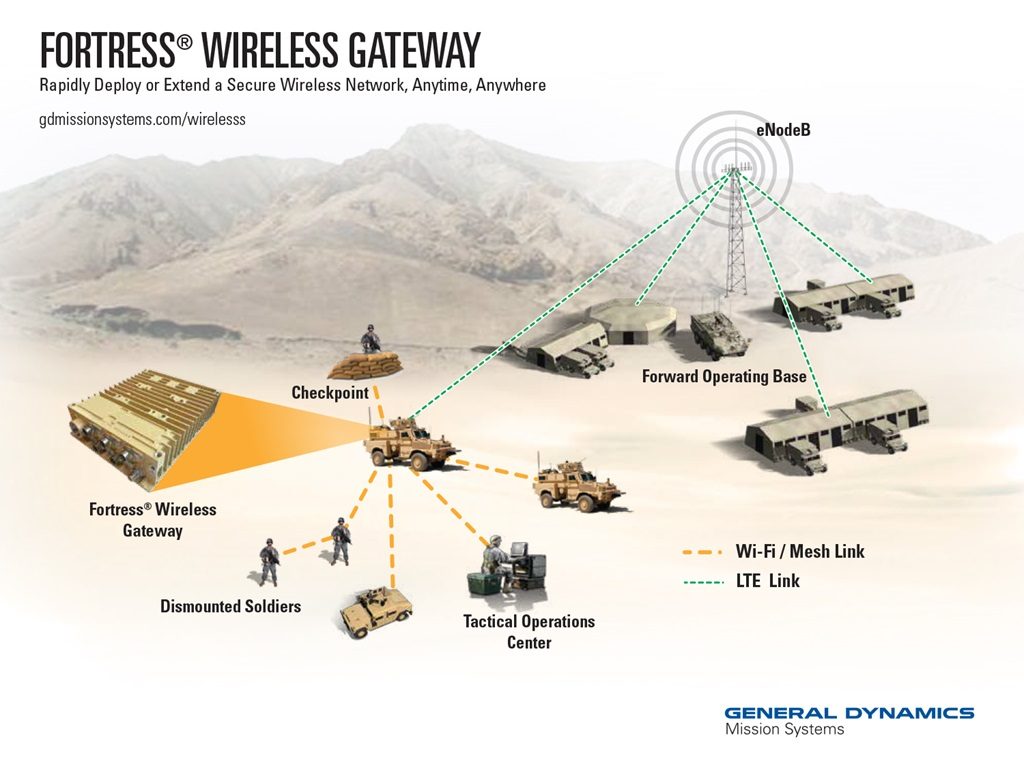
One of the important advantages ITN introduces is a ‘secure but unclassified’ (SBU) service level, being more suitable for tactical users. Unlike highly encrypted military networks that support Secret level and above, ITN is designed for tactical use at battalion level, where secrecy is time-sensitive and therefore becomes unclassified after a while. Therefore, having high security becomes a liability, rather than an advantage. Utilising less powerful encryptions, SBU leverages a combination of military and commercially available networks and security measures that offer more flexibility by using all available networks. While SBU information is not classified, the ITN’s multiple layers of encryption protect data transmitted over military or commercial networks, the internet, cellular networks or compatible but non-military waveforms. Other benefits include simplified training, setup and employment of the network, which speeds up planning time and creates a more collaborative planning environment, including communications with joint and coalition partners.
Data-Driven Ecosystems
Utilising standard-based communications, the military flattens the networks, introducing more competition. Responding to the competition, companies specialised in military communications tighten their service offerings by leveraging radios, waveforms and applications to provide users with an easily deployed ‘ecosystem’ that can instantly deploy on their networks. Powered by highly integrated networking, Harris FALCON NET provides such data-centric services to offer converged voice, data and full motion video interoperability throughout the FALCON family. Supporting over 50 waveforms over SDRs, FALCON NET enables users to cope with demanding operational environments, through low latency, anti-jam, and mobile networking. As part of that ecosystem, Harris also offers applications previously implemented by users or third-party providers. Such applications support anything from basic chat and messaging and position location reporting, to battle management, common operating picture, network planning and monitoring design. Relying on a single provider for ‘everything digital’ may be risky but help ensure the success and ‘future proof’ of such programmes.
Summary
Significant increases in defence spending among most of the NATO and European members reflect the growing need for force modernisation. The future force may not be bigger or stronger, but far more agile, empowered by modern digital networks, providing the dynamics bringing the total force to effect. Modern digital communication is the enabler for such capabilities. Carrying voice, data and video to bond individual units with weapon systems and supporting elements, such communication is essential to turn multinational forces and joint commands into cohesive combat forces.
Tamir Eshel is a security and defence commentator based in Israel.







